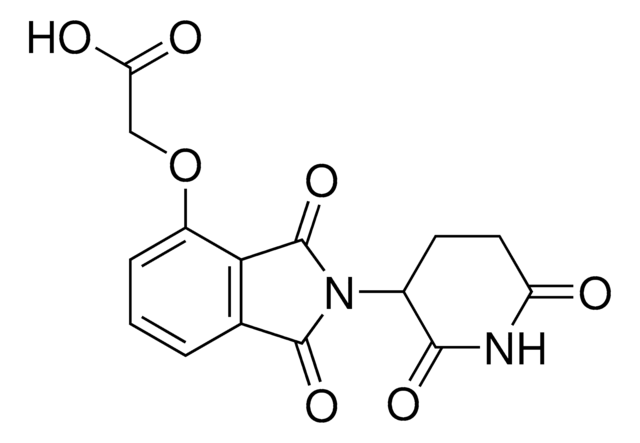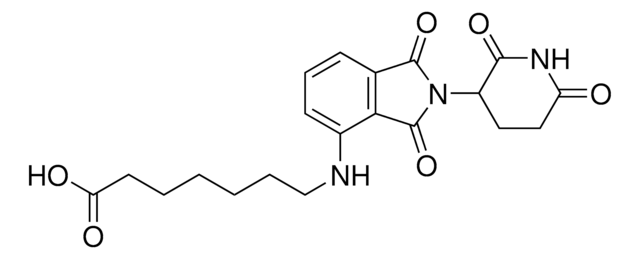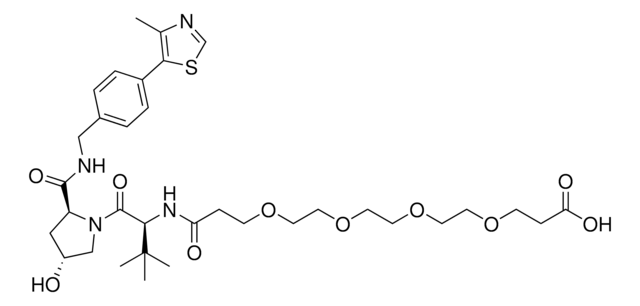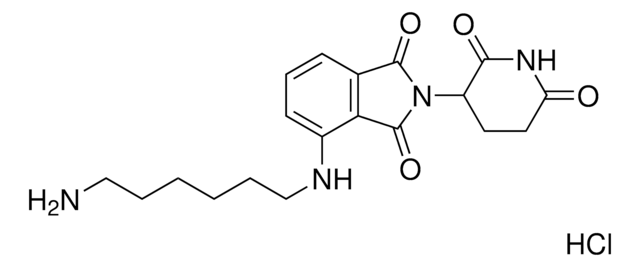おすすめの製品
ligand
pomalidomide
品質水準
アッセイ
≥95%
形状
powder or crystals
反応適合性
reactivity: amine reactive
reagent type: ligand-linker conjugate
官能基
carboxylic acid
保管温度
2-8°C
SMILES記法
OC(CCCCCCCCCNC1=CC=CC2=C1C(N(C3CCC(NC3=O)=O)C2=O)=O)=O
アプリケーション
その他情報
Portal: Building PROTAC® Degraders for Targeted Protein Degradation
Targeted Protein Degradation by Small Molecules
Small-Molecule PROTACS: New Approaches to Protein Degradation
Targeted Protein Degradation: from Chemical Biology to Drug Discovery
Impact of linker length on the activity of PROTACs
法的情報
関連製品
保管分類コード
11 - Combustible Solids
WGK
WGK 3
引火点(°F)
Not applicable
引火点(℃)
Not applicable
適用法令
試験研究用途を考慮した関連法令を主に挙げております。化学物質以外については、一部の情報のみ提供しています。 製品を安全かつ合法的に使用することは、使用者の義務です。最新情報により修正される場合があります。WEBの反映には時間を要することがあるため、適宜SDSをご参照ください。
Jan Code
901525-50MG:
901525-BULK:
901525-VAR:
最新バージョンのいずれかを選択してください:
この製品を見ている人はこちらもチェック
資料
Partial PROTACs are a collection of crosslinker-E3 ligand conjugates with a pendant functional group for covalent linkage to a target ligand.
Partial PROTACs are a collection of crosslinker-E3 ligand conjugates with a pendant functional group for covalent linkage to a target ligand.
ライフサイエンス、有機合成、材料科学、クロマトグラフィー、分析など、あらゆる分野の研究に経験のあるメンバーがおります。.
製品に関するお問い合わせはこちら(テクニカルサービス)

















